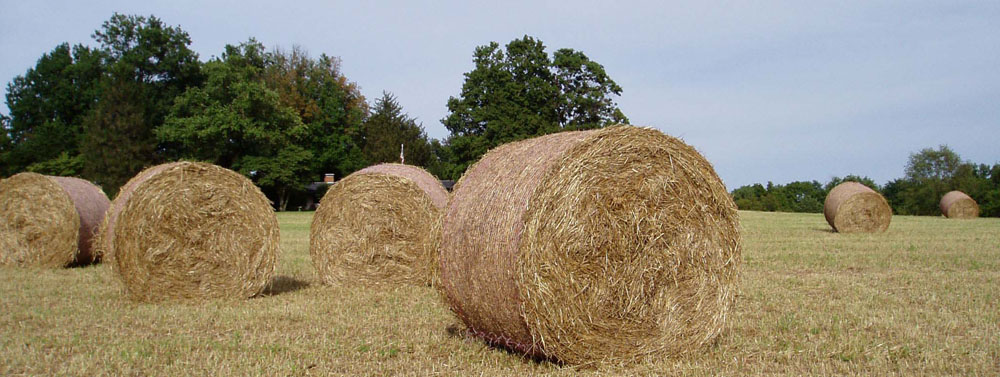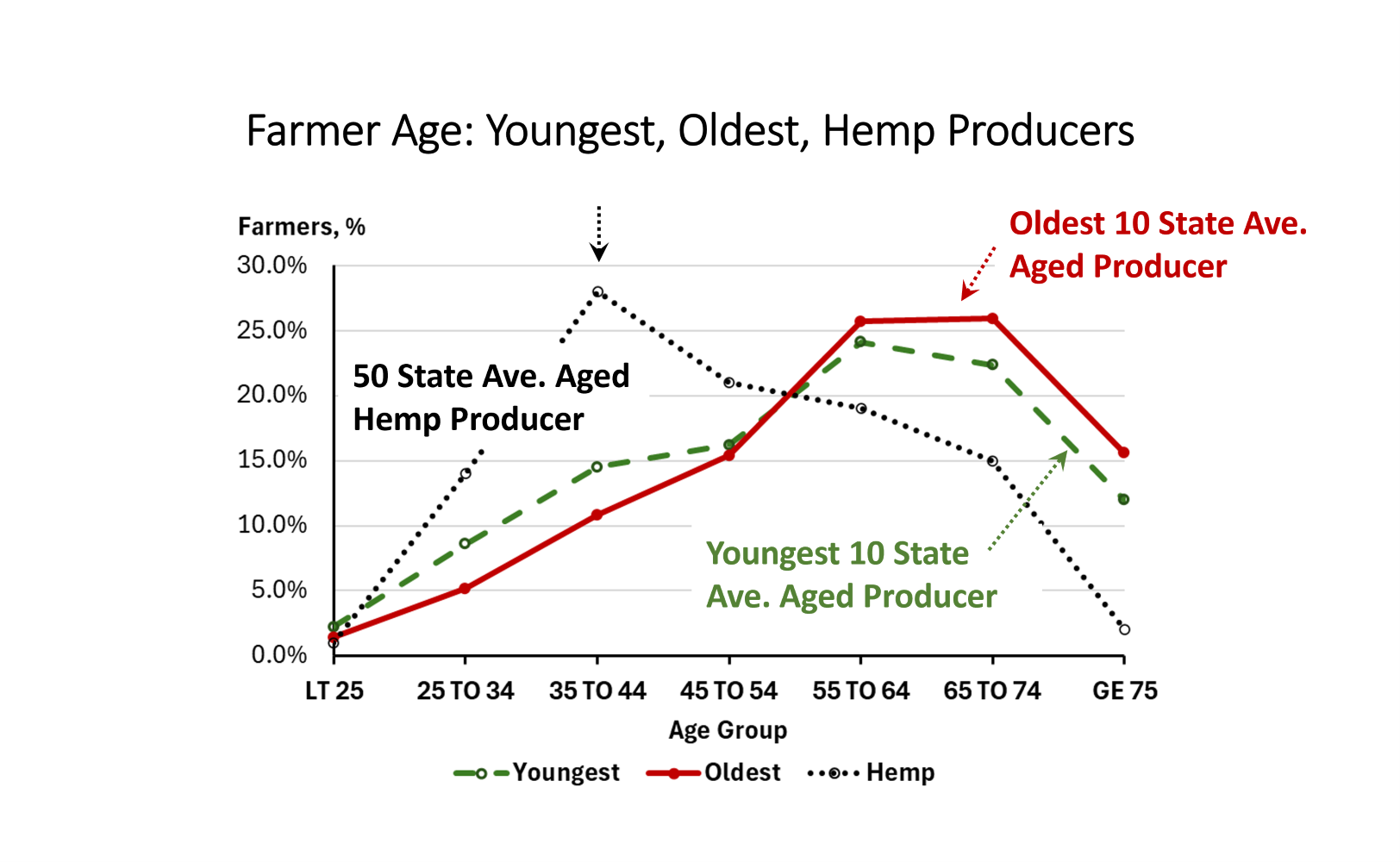Hemp Producers are Bucking the Aging Farmer Trend
The USDA provides a treasury of farm data in many different formats. With decades of farm data experience, I hoped I could bring new insights into the ‘aging farmer’ discussion. What I learned instead is that hemp producers don’t fit the aging farmer trend. Perhaps these specialized new farmers might serve as a template for either refining old ways of analyzing producer age data, or for drawing younger producers into the commercial farming fold.
Economic Research Service (ERS) identifies retired farmers in their farm typology framework. The ERS reports that 11 percent of US farms are retired. Hum. That means that 200,000 US farmers are generally over the age of 65 years old. Their output has a negligible monetary value (while their cultural value is enormous). Using the 2022 Census of Agriculture, the state to state variability of farm demographics, would illustrate some age differences. Retirement is not a data identifier in the Census of Ag data, but I thought I could tease it out.
Average Producer Age by State
Data from the 2022 Census of Ag was downloaded by state. The seven age categories in this associated chart were sorted by percentage on the basis of most young farmers and most older farmers. The data in this chart is the percentage for each category of the ten states with the oldest producers and the ten states with the youngest producers. This represented the upper and lower 20 percent for producer ages.
Counter to my hypothesis, there is almost no difference. An upward skewing of producer age data due to retirement aged farmers was unable to be illustrated. It is clear that a lot of farm decision makers are aging. US farms are highly variable. Making sense of the variability requires the best question to be asked. One question worthy of asking is, “On what kind of farms does producer age have the most influence?”
2022 Ag Census Focus on Hemp
Datasets like the Census of Ag that span centuries, do not change data series presentation rapidly. When data users anticipate data on farms between 1 and 9 acres for decades, and it disappears, it creates gaps in the next data analysis. However, USDA, National Agricultural Statistics Service (NASS) that curates the Census of Ag, works hard to find the balance of data series stability and showcasing emerging sectors.
The 2022 Census of agriculture highlights US hemp production. So in the producer age datasets for the 2022 Census of Agriculture, data is available on producer age group categories that grew hemp. This data was also included in today’s chart. The highest age group of hemp producers was between 35 and 44 years of age. This is 20 years younger than highest age category of the general population of producers, which is 55 to 64 years of age. Although the average age of hemp producers was 49 years, where the average age of all US producers is 58 years.
It is perhaps intuitive to assume that these new and younger producers must just be a lot of young hippies and potheads, right? No. One of the fascinating things about hemp is there are more barriers to entry from a regulatory standpoint than other farm crops. It takes special equipment, more regulatory oversight, and acres of risk. It likely takes more capital to be a commercial hemp producer than producers entering into the general farm production universe.
When this rich farm dataset is sliced in appropriately narrow ways, some of the answers for the general farm population do change. Is this characteristic of the most successful commercial producers of each commodity? Maybe. A more interesting question is, “Do hemp producers get access to capital in less traditional sweat equity methods?”
The aging producer analysis didn’t work the way it was hypothesized, but I am encouraged by the unexpected findings associated with fledgling hemp producers and their age.



Comments
Hemp Producers are Bucking the Aging Farmer Trend — No Comments
HTML tags allowed in your comment: <a href="" title=""> <abbr title=""> <acronym title=""> <b> <blockquote cite=""> <cite> <code> <del datetime=""> <em> <i> <q cite=""> <s> <strike> <strong>